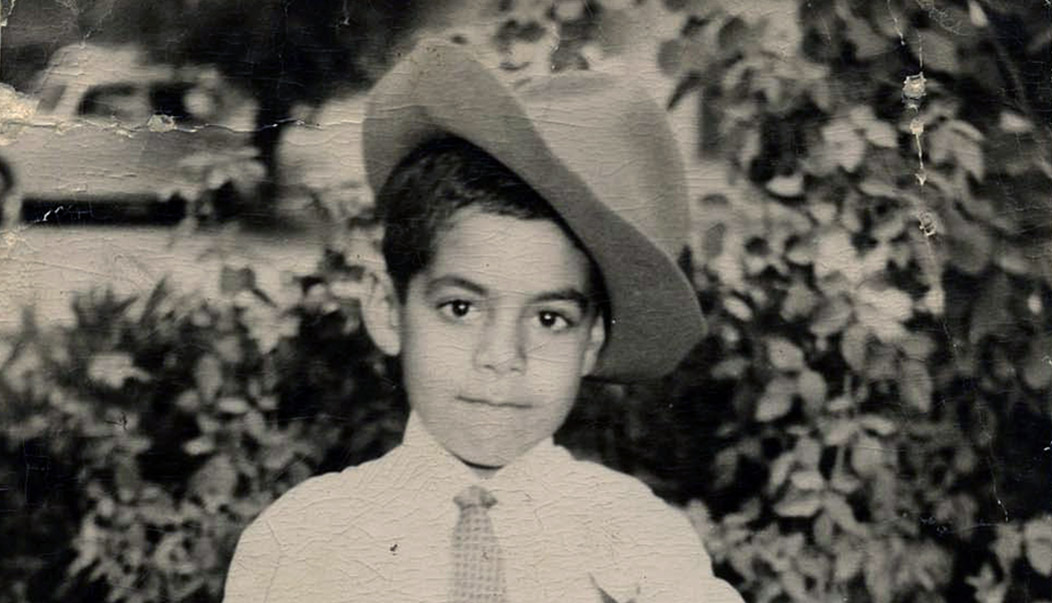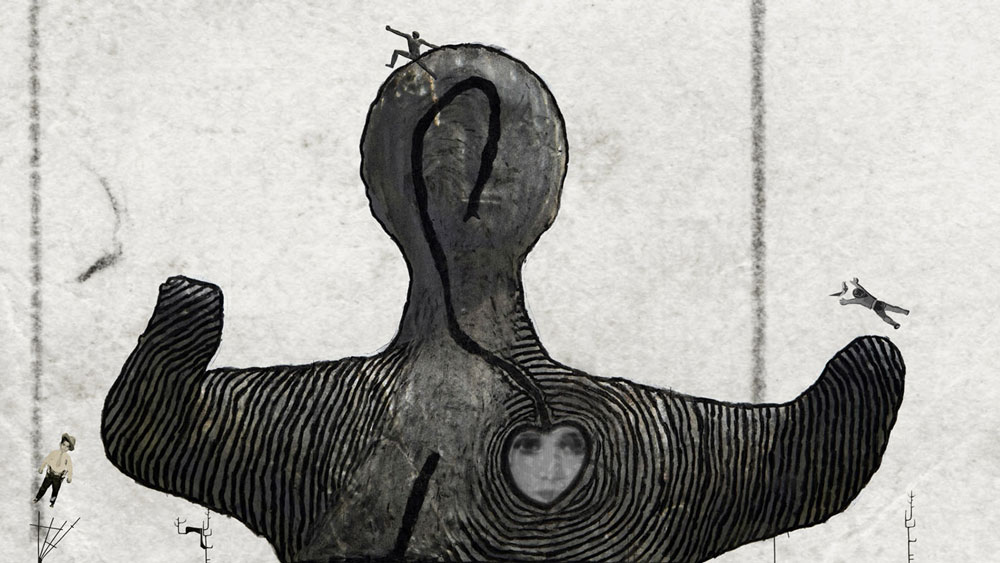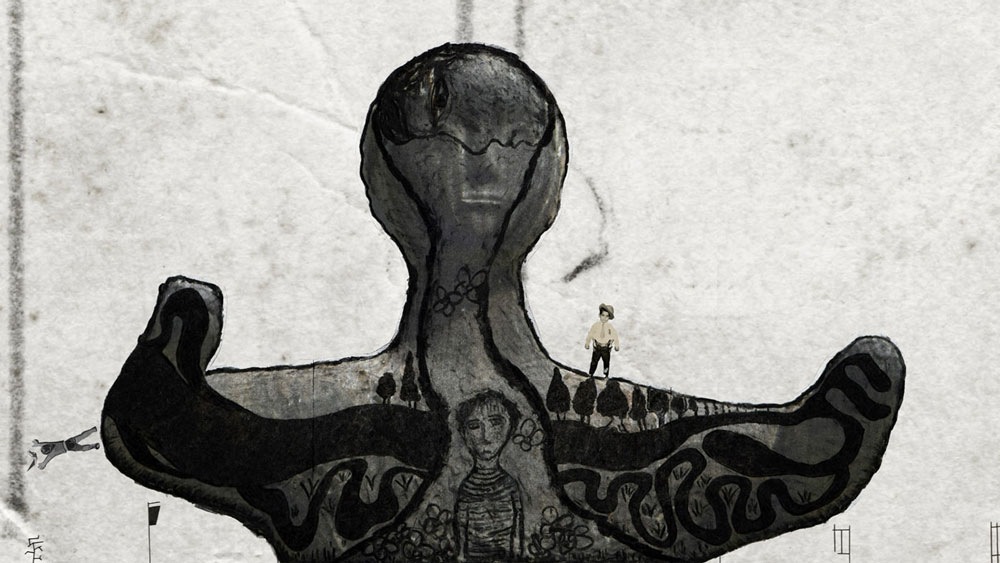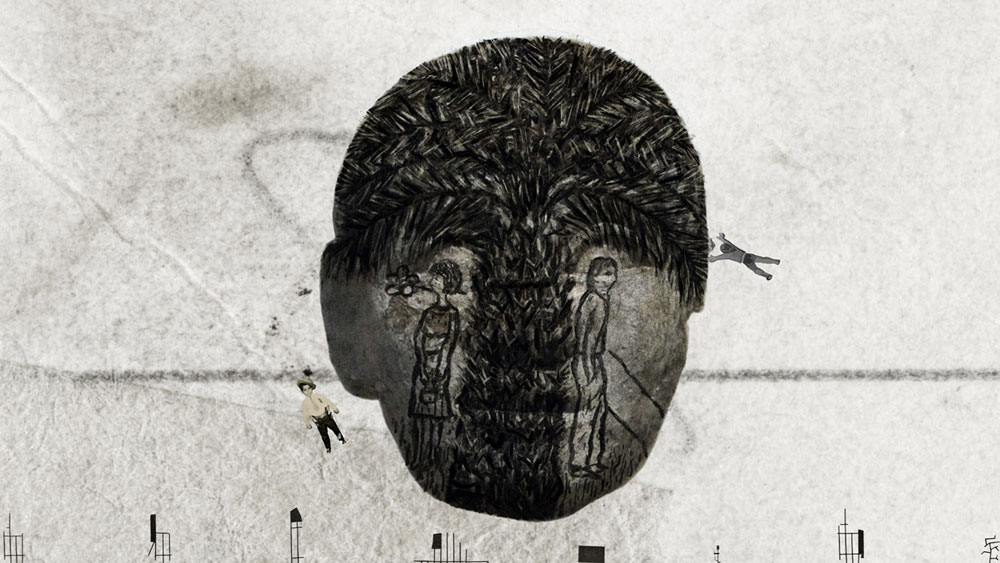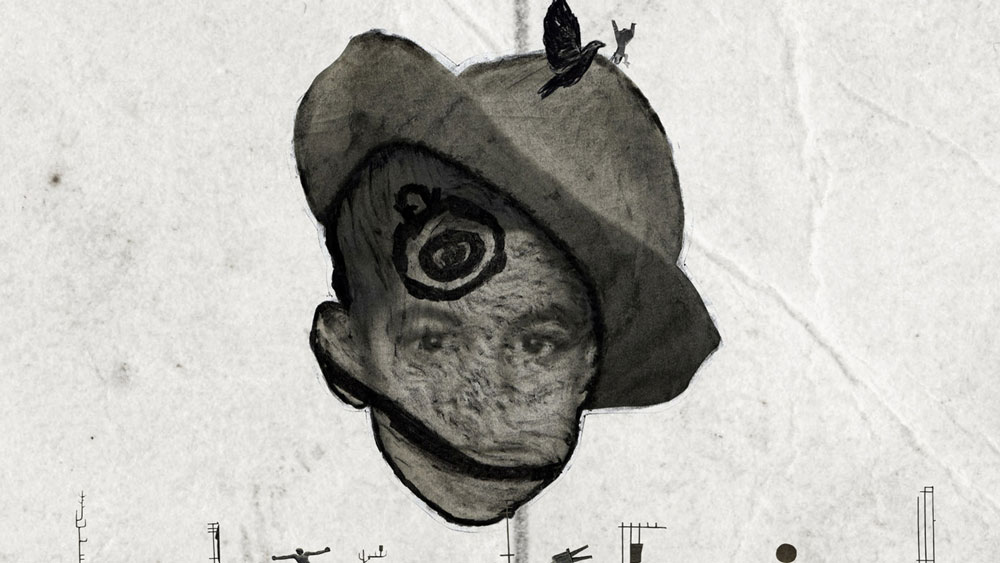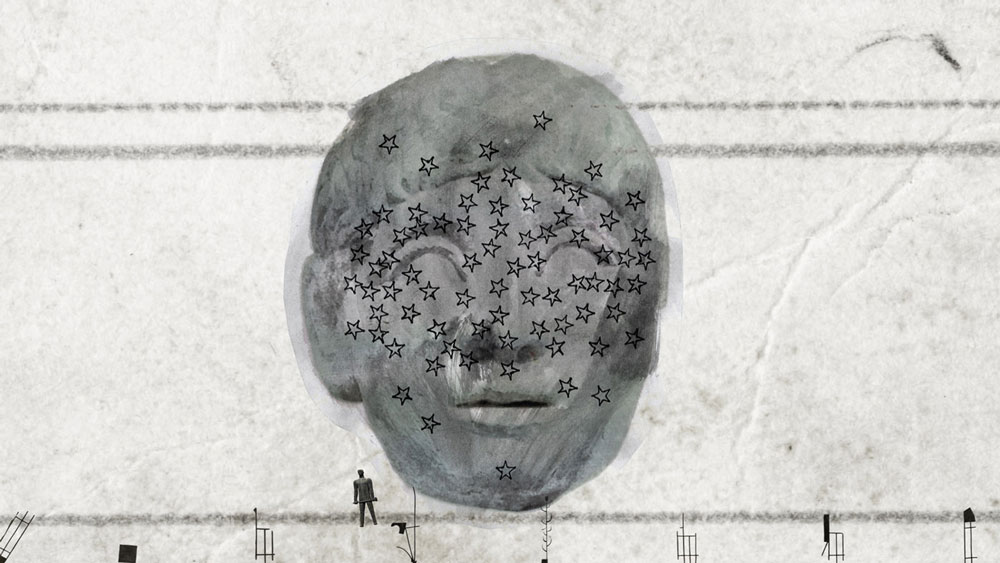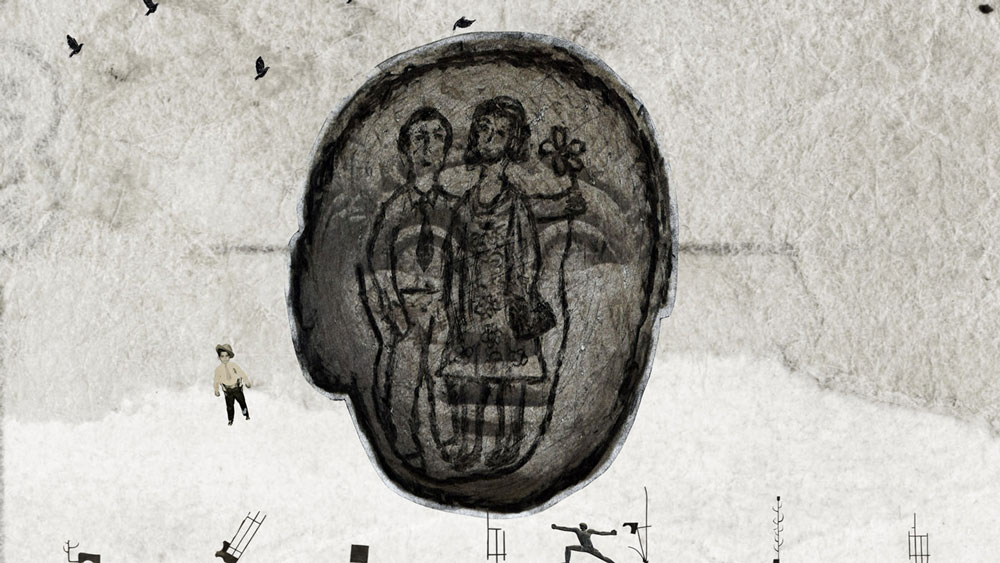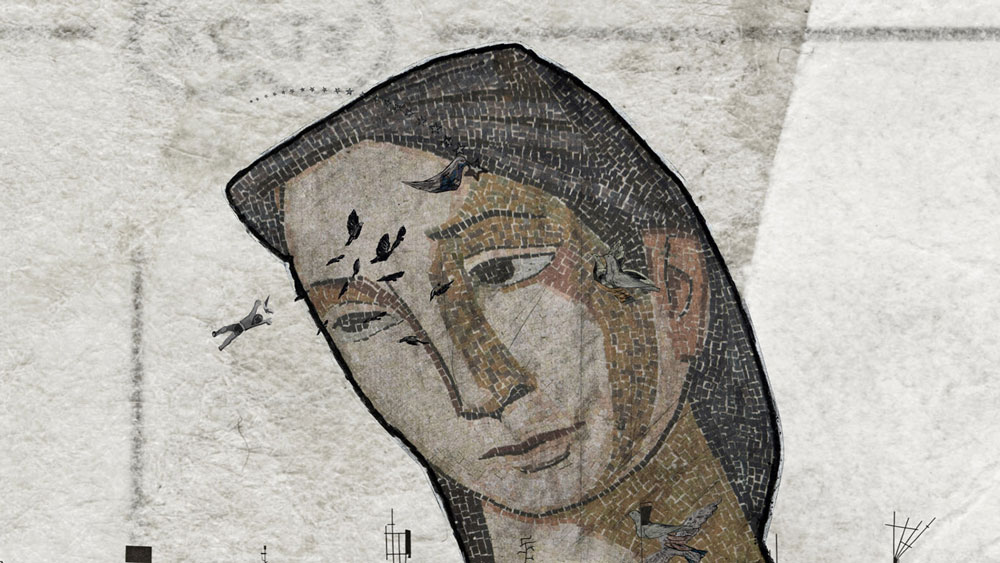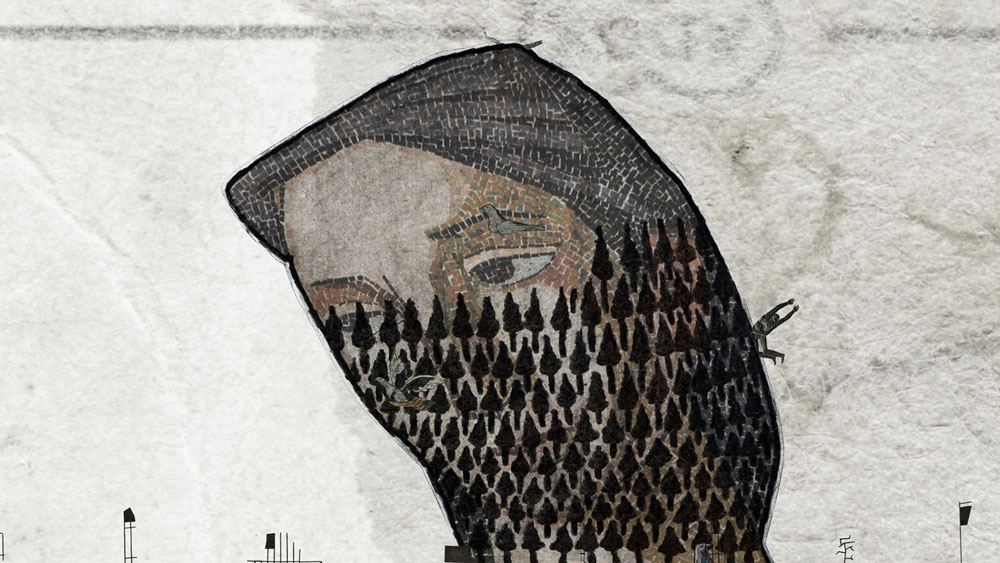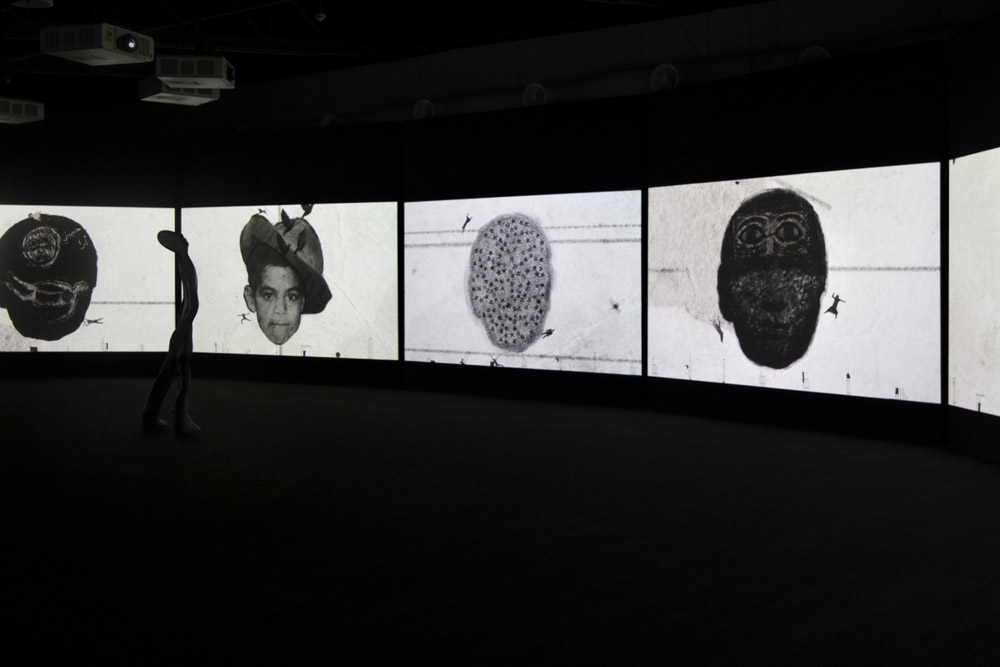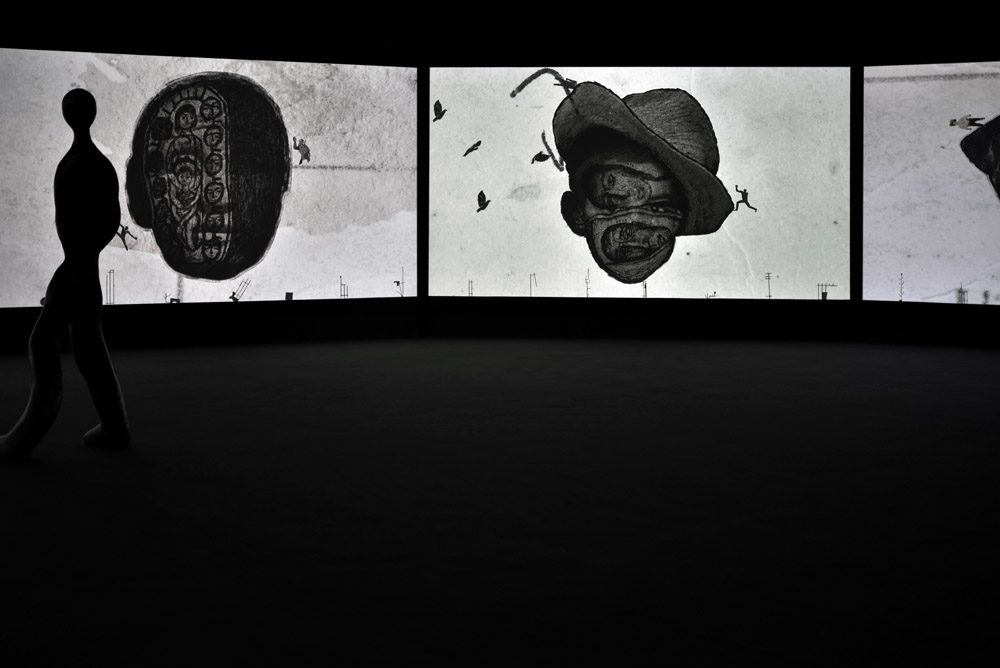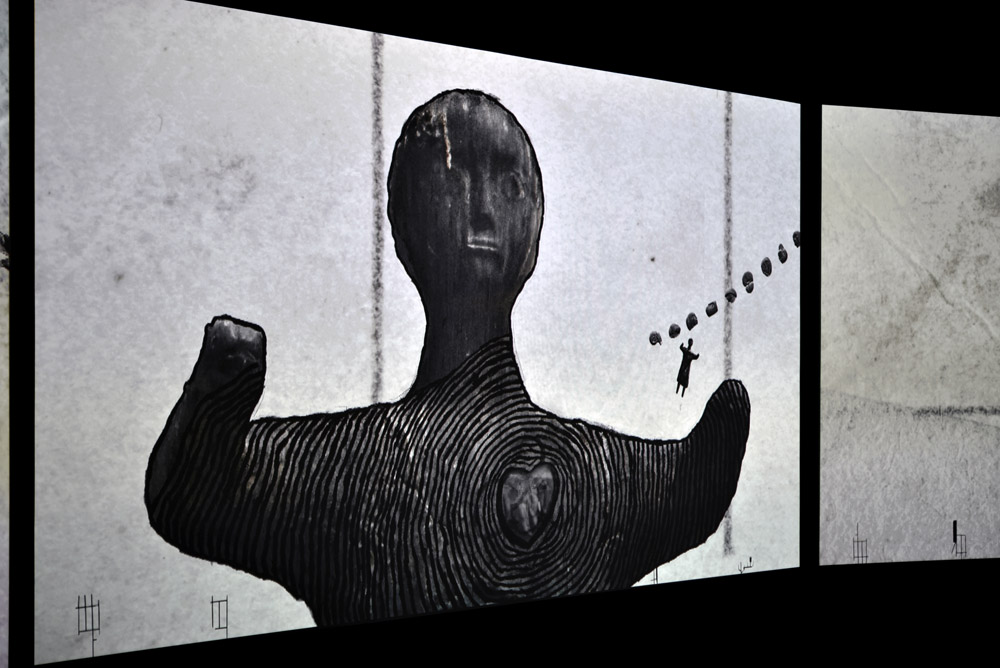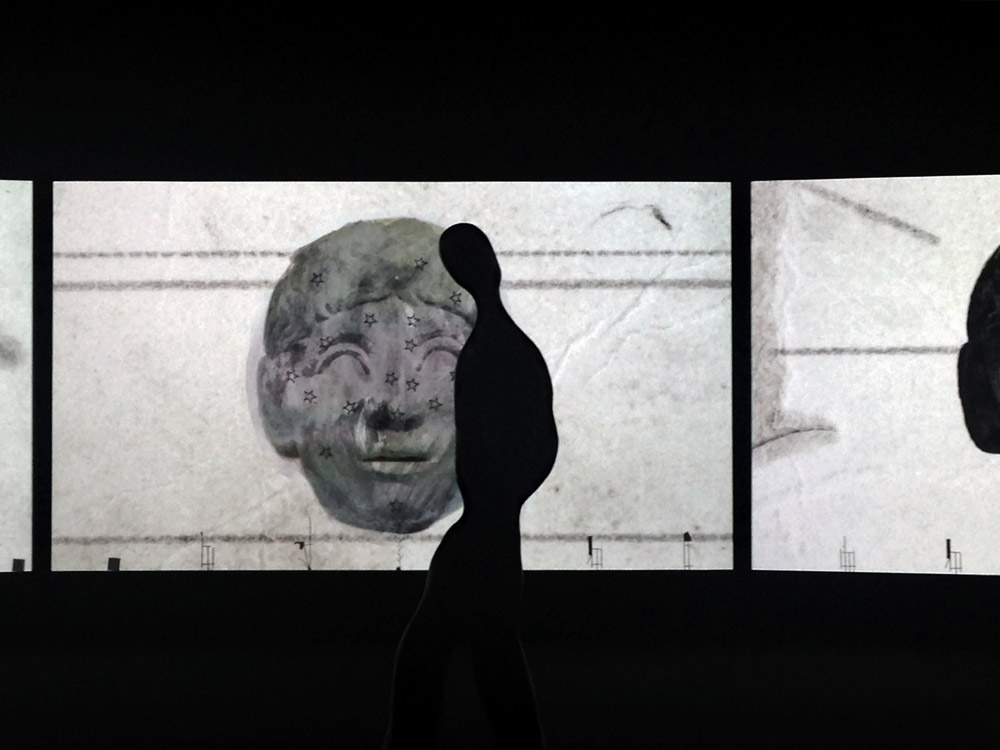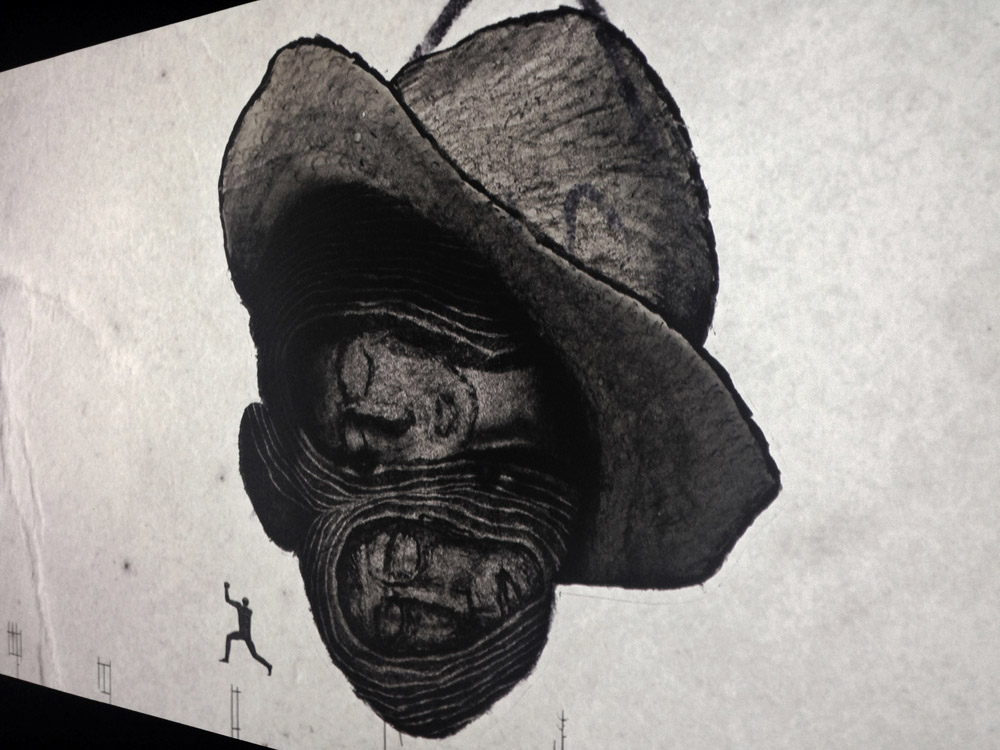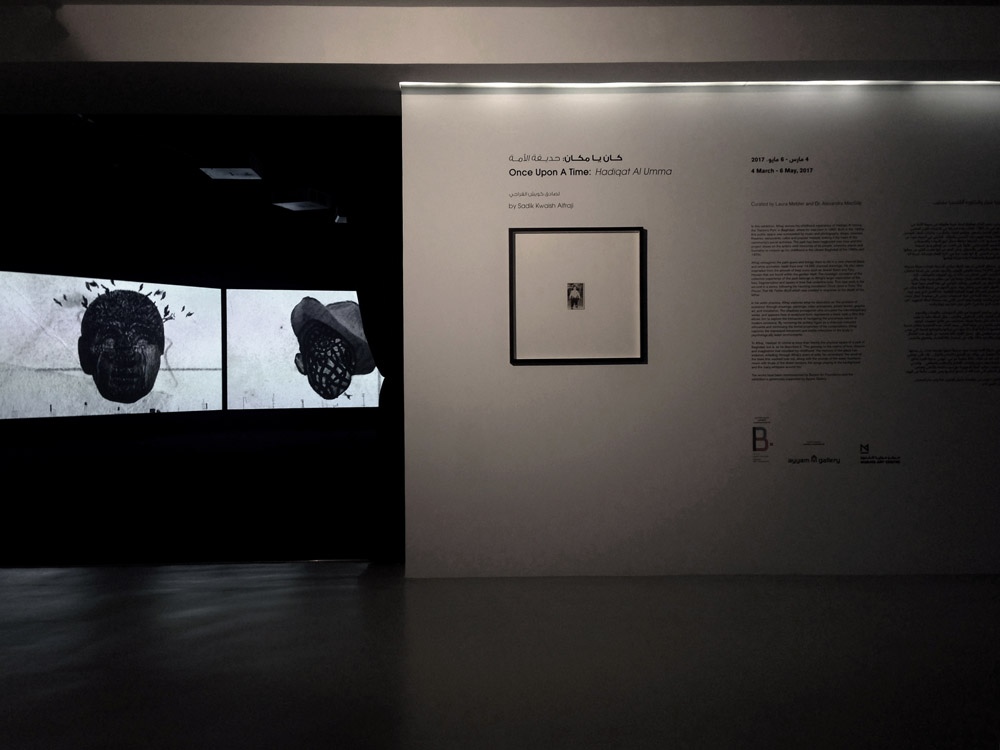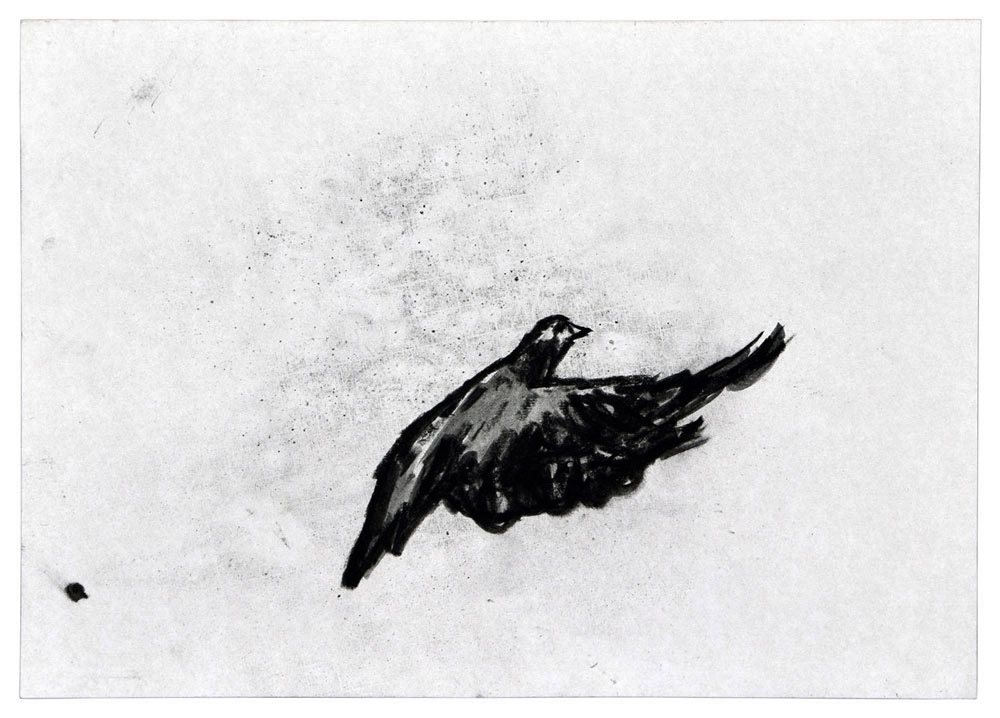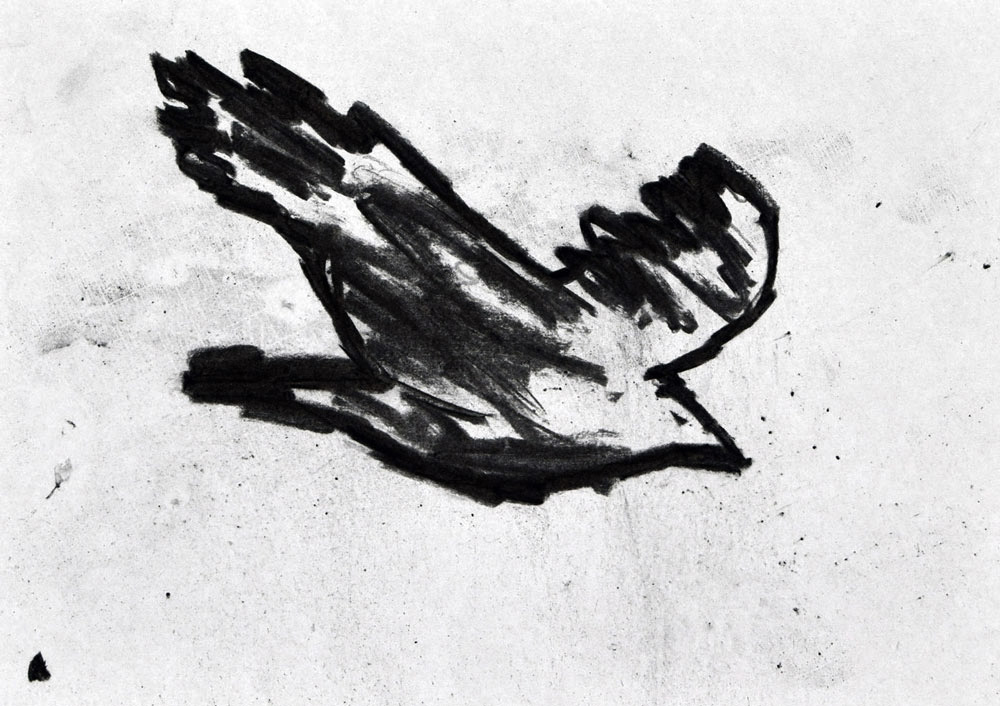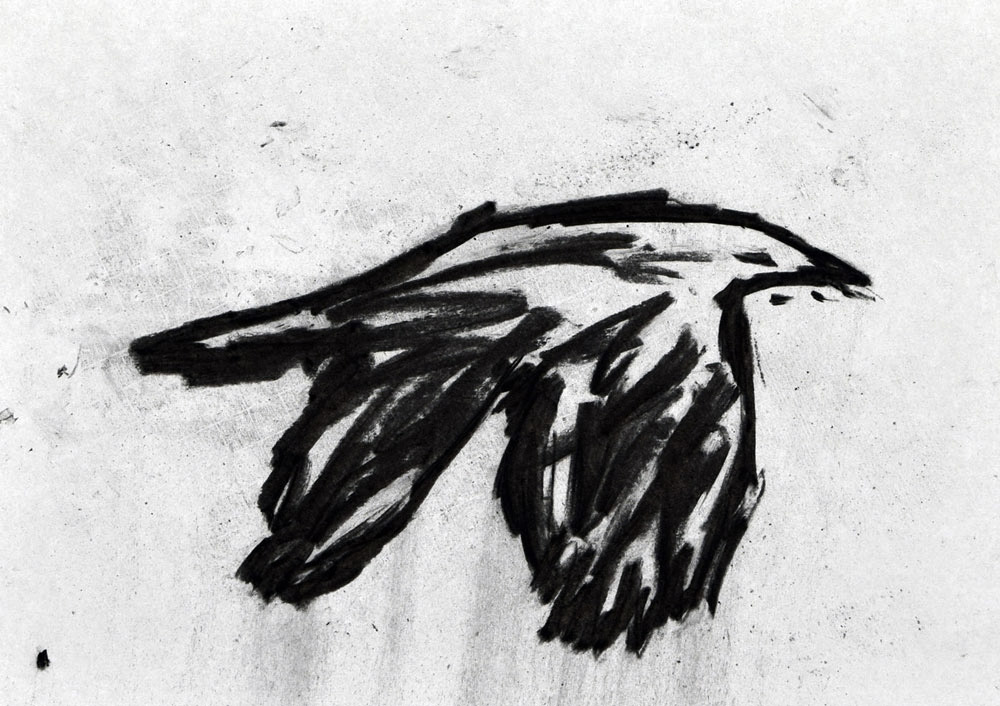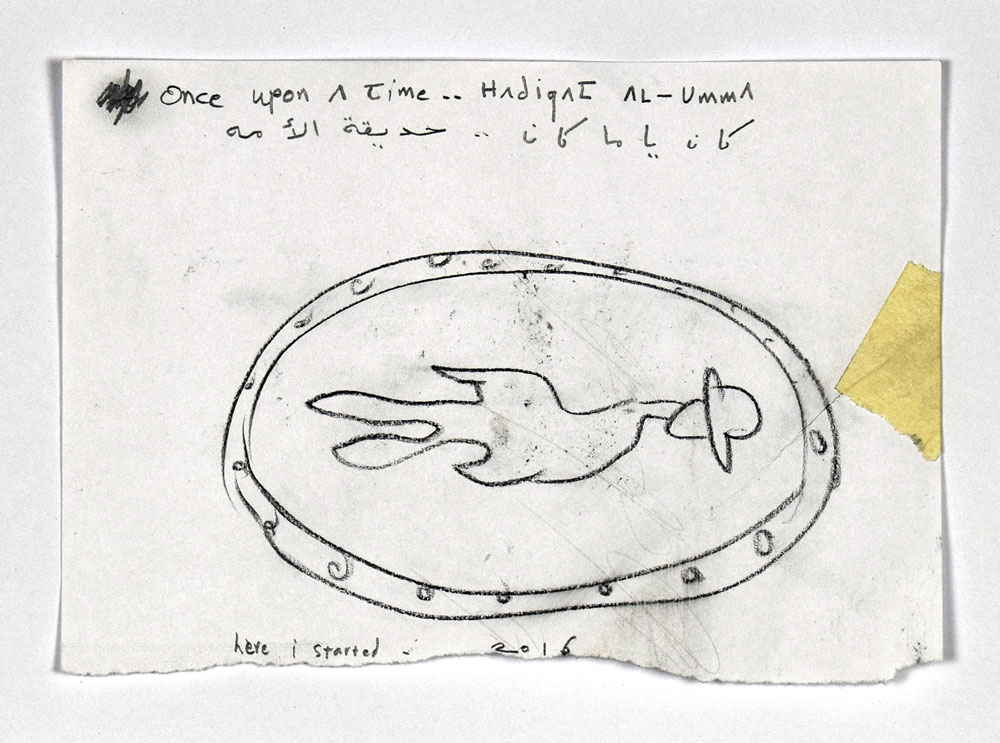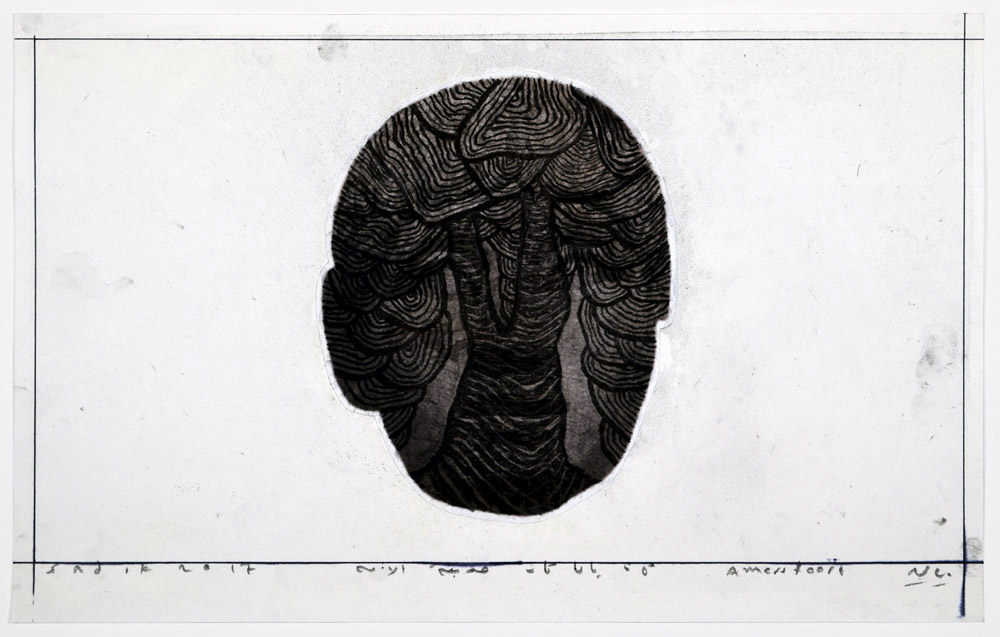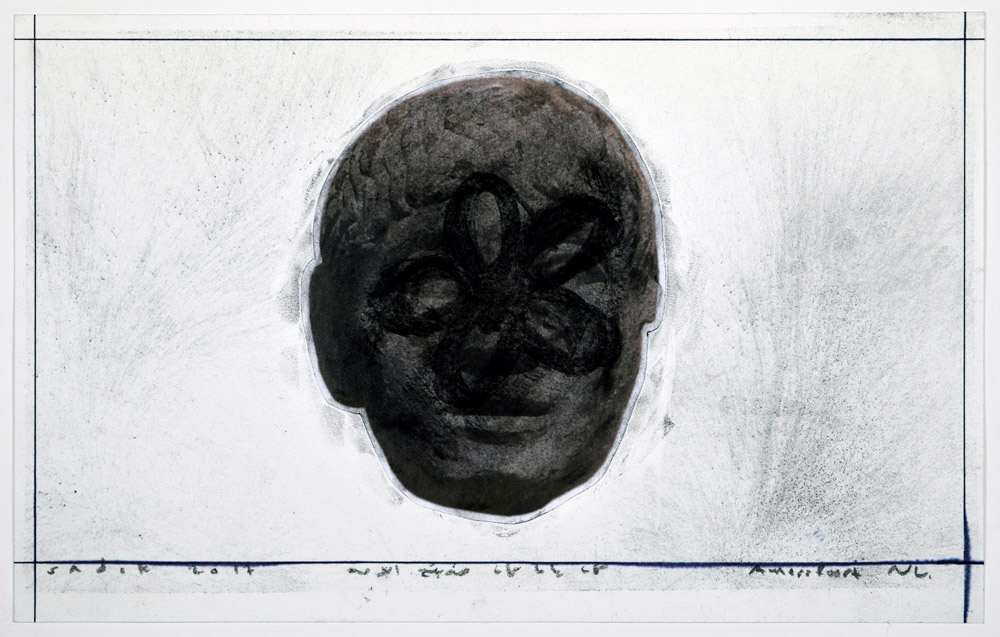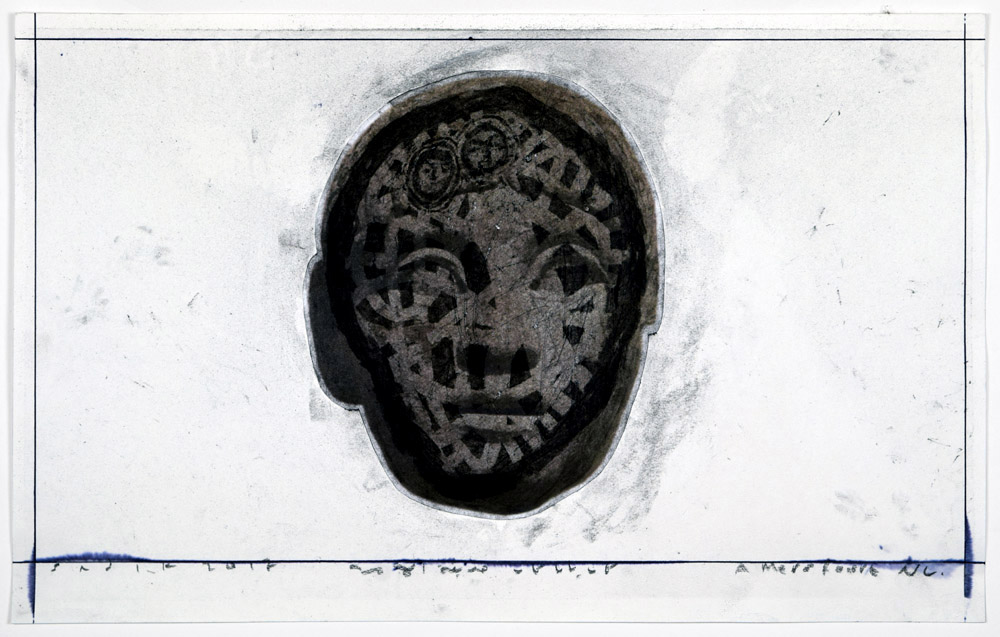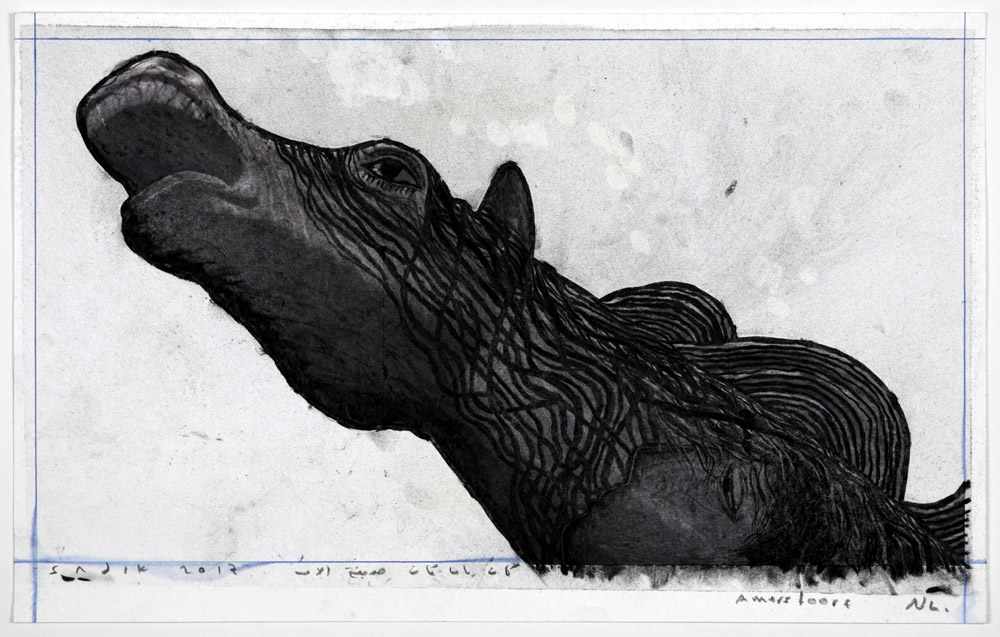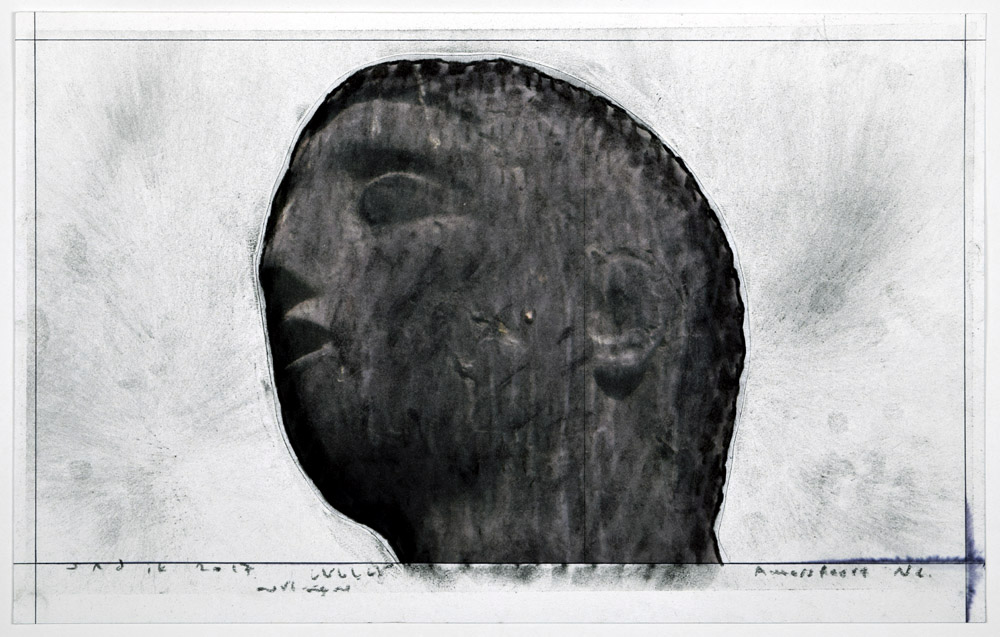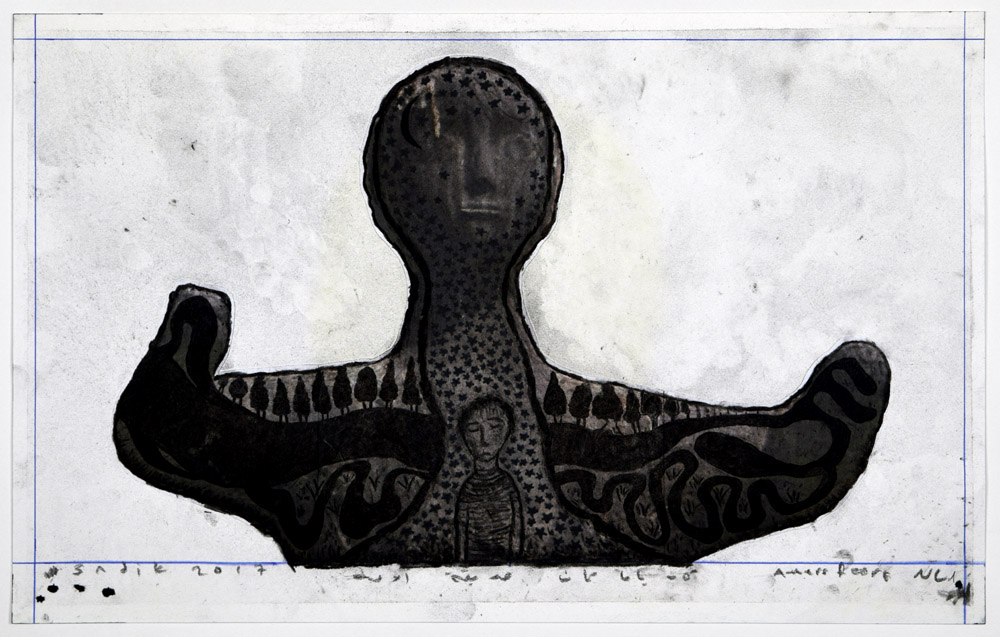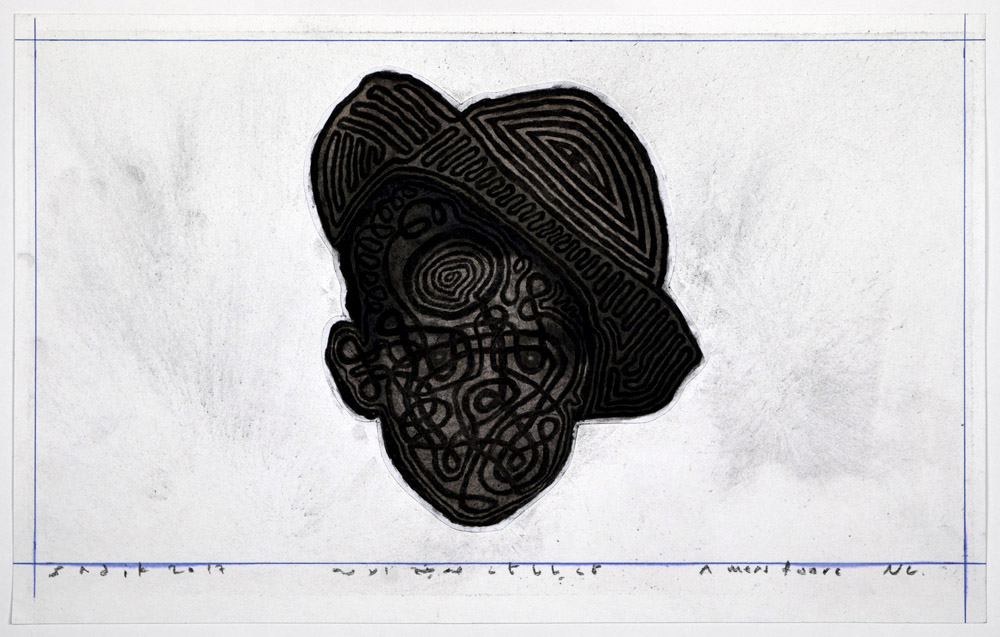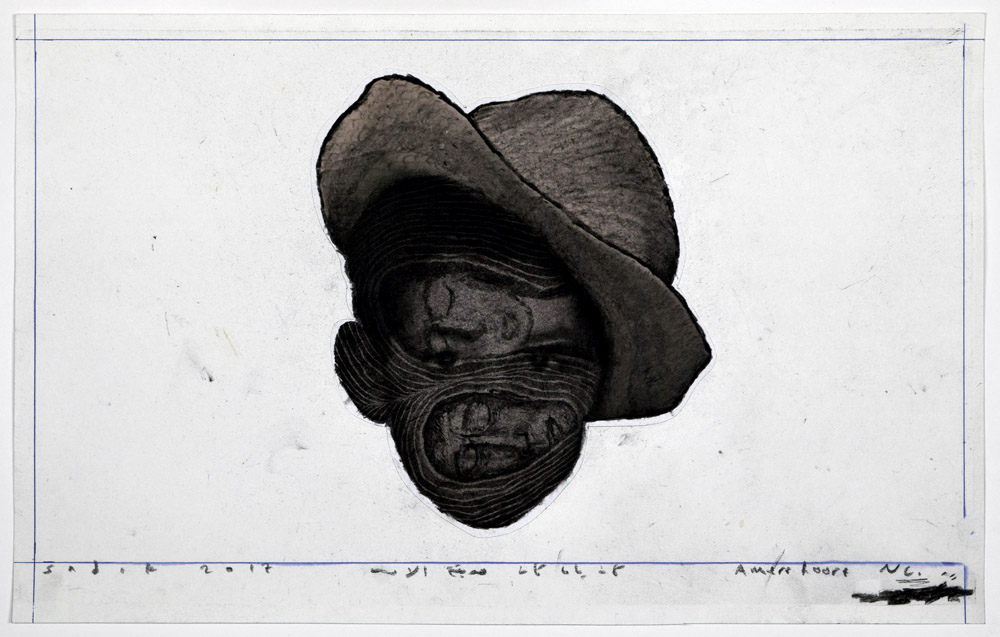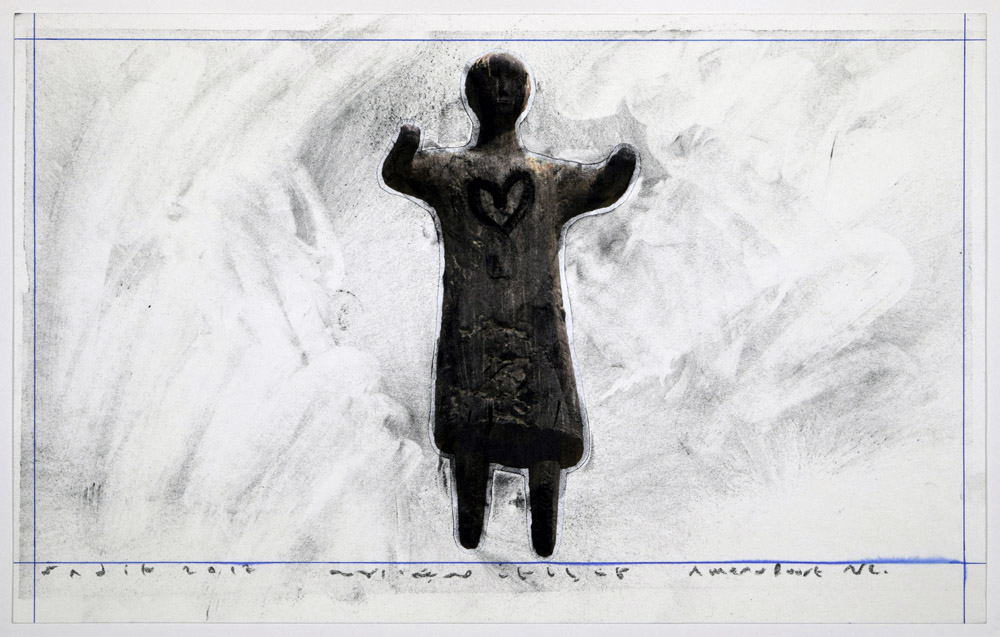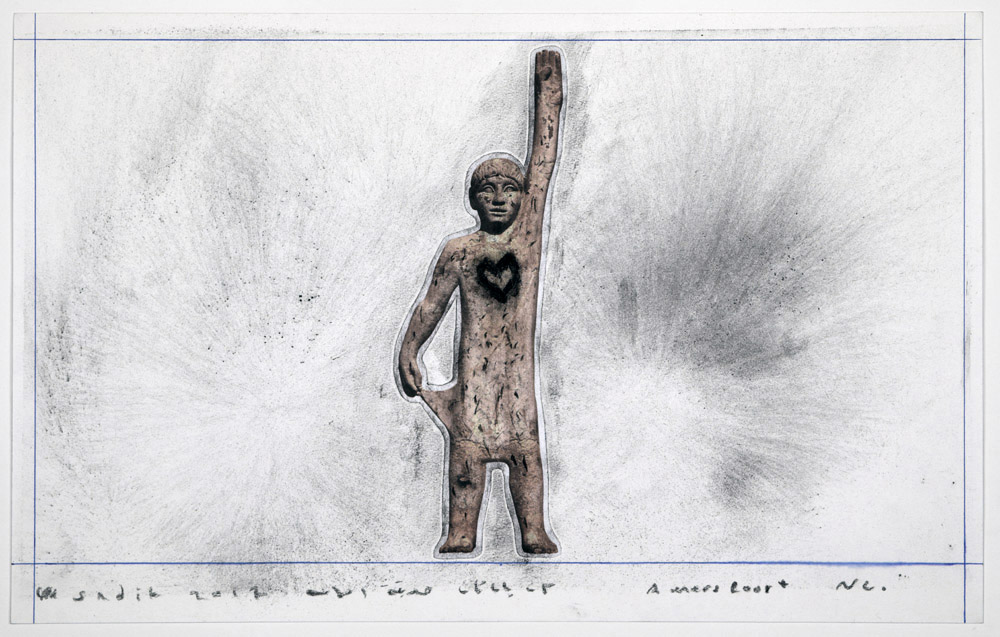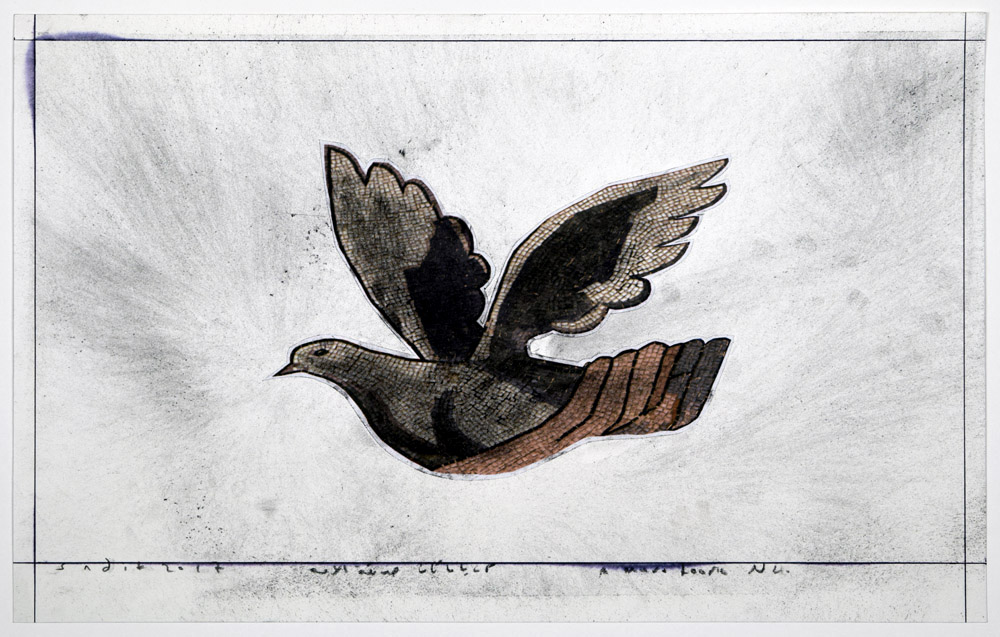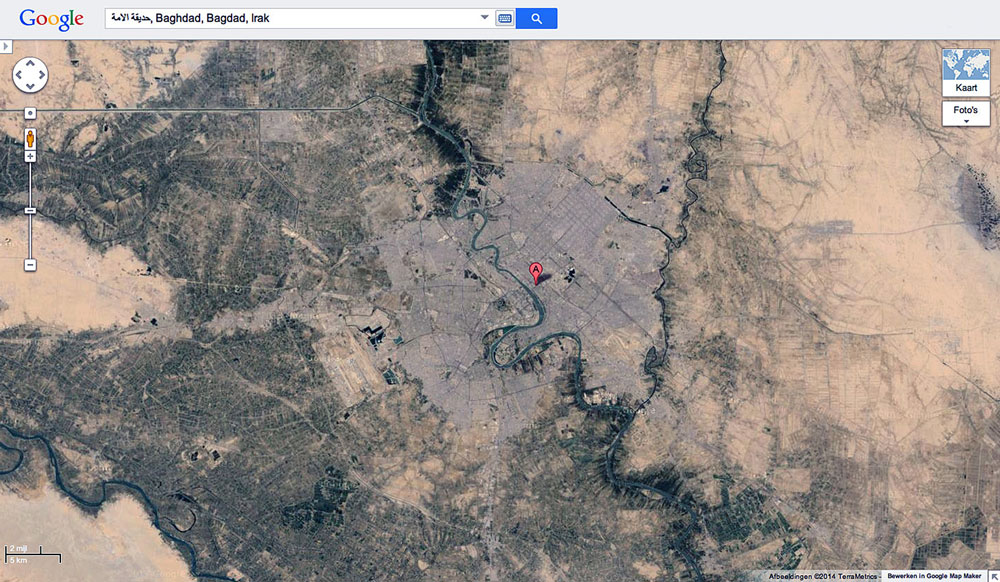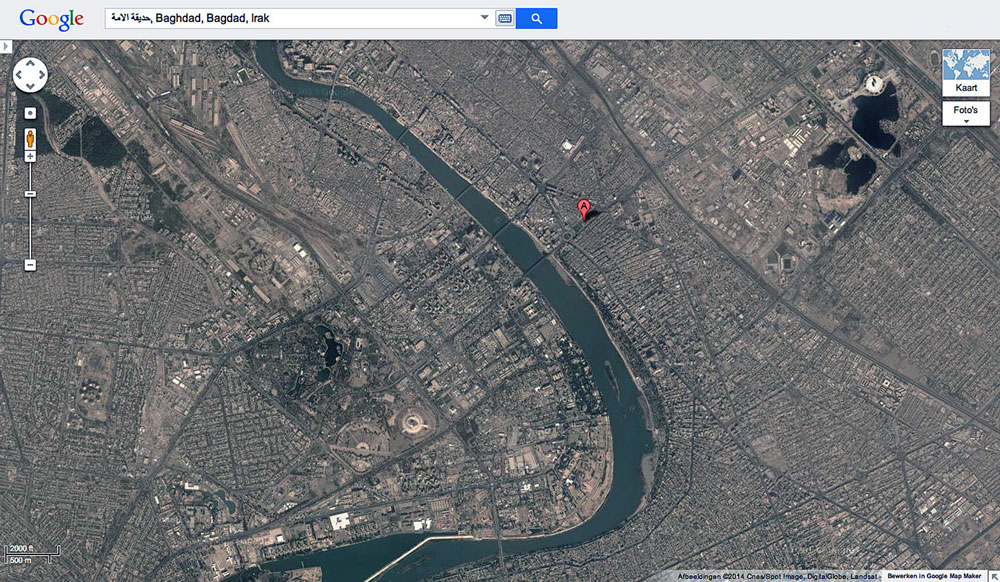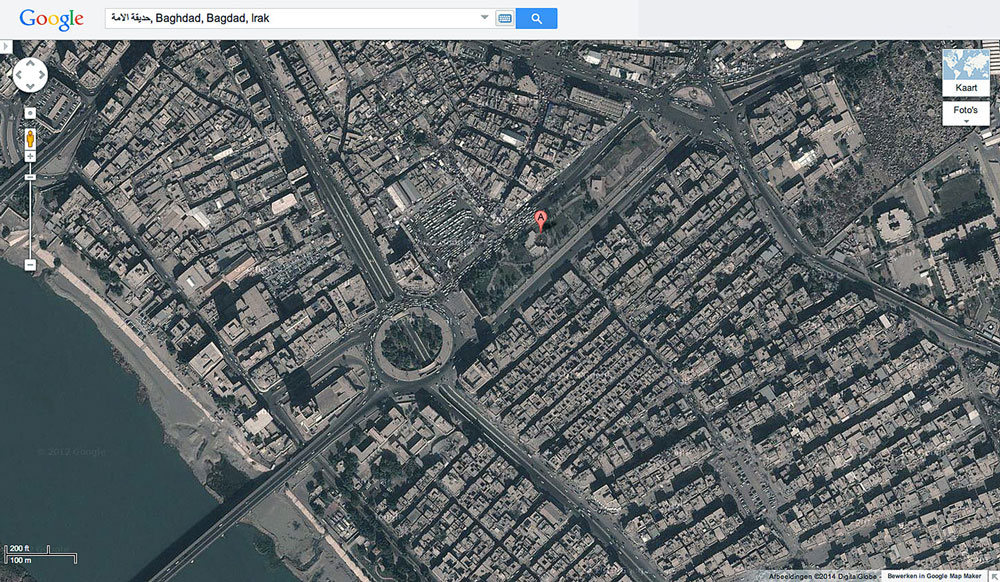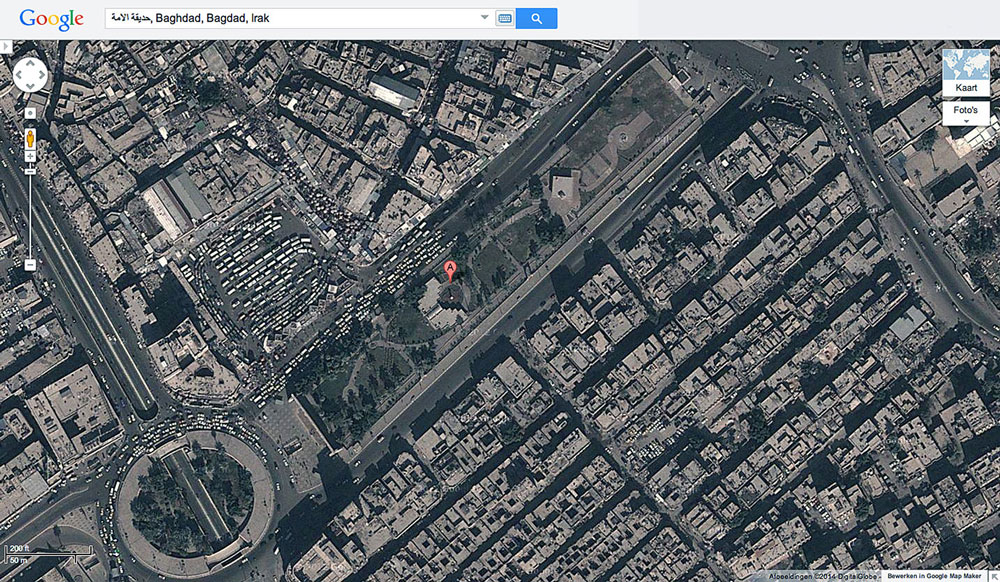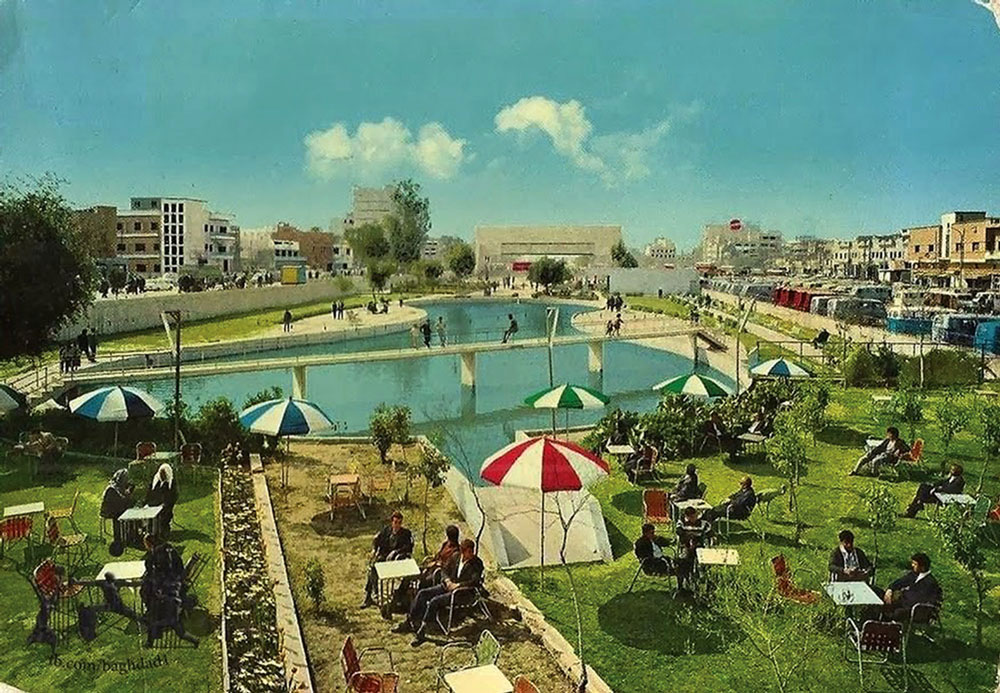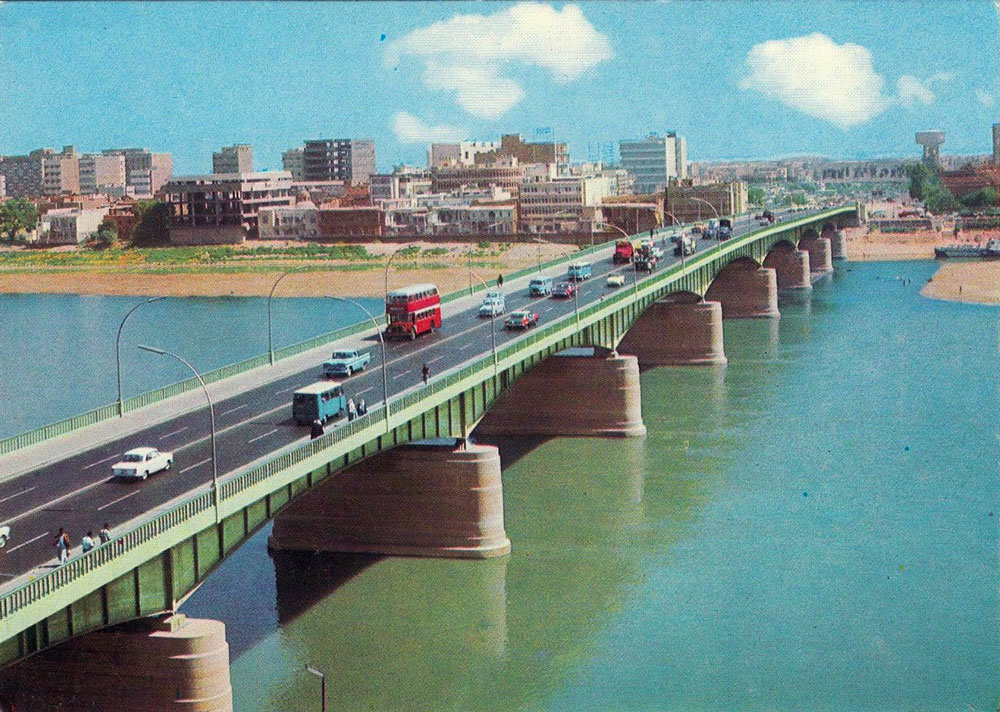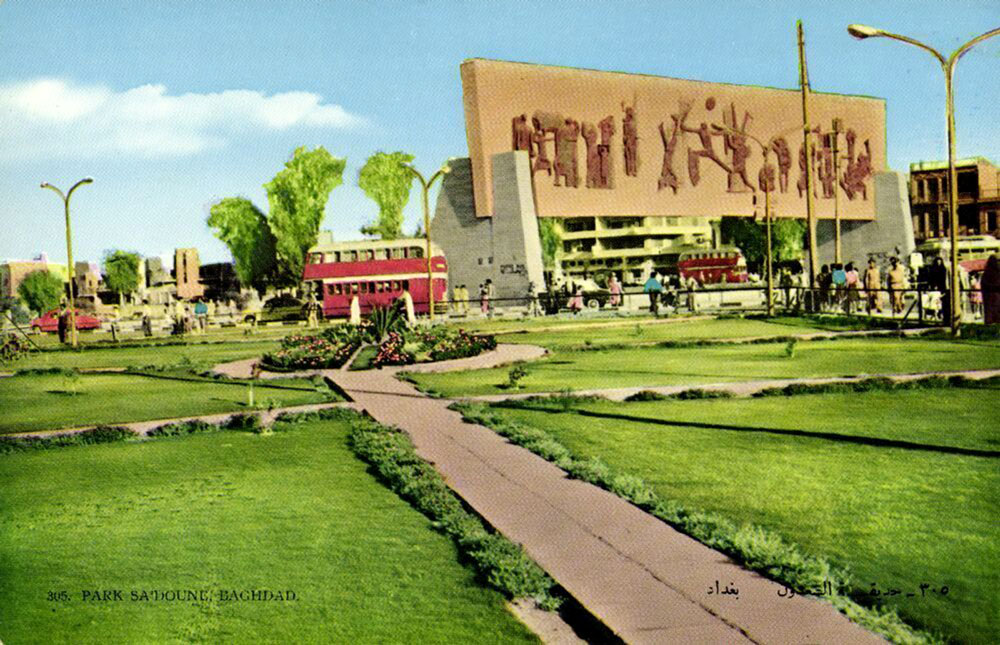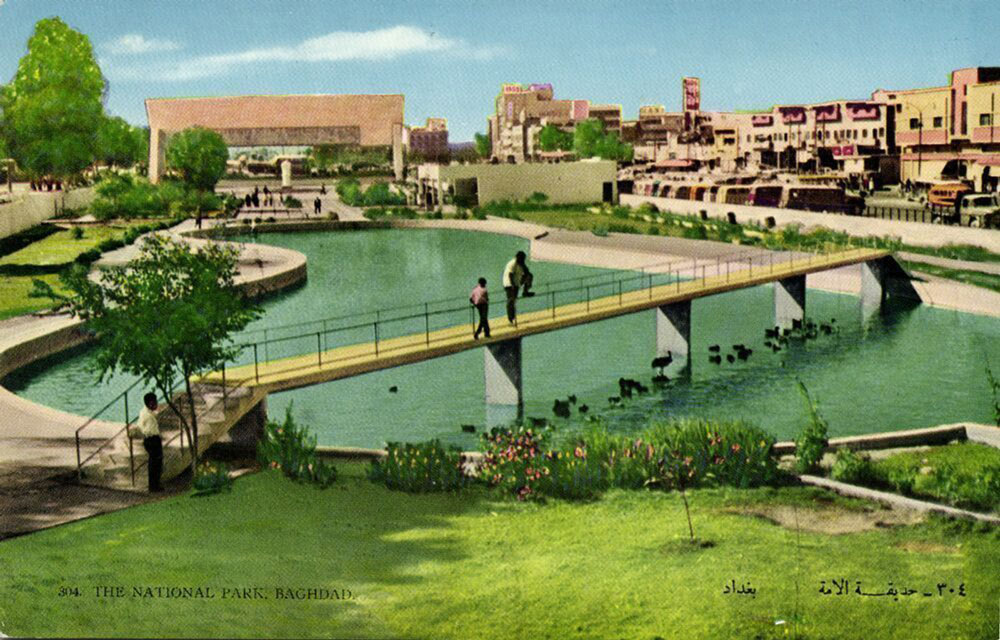Once Upon a Time, Hadiqat Al Umma
2017
A panoramic installation consisting of 9 video-animation channels and a single sculpture. Commissioned by Barjeel Art Foundation. The work is a nostalgia of Hadiqat al Umah park in the center of Baghdad.
The artist tried to Re-create the garden/park's experience that was a station of relaxing in the downtown Baghdad.
In these animations the artist used a rich mixer of charcoal drawings, photographs, old TV / cinema footage. Many of the animated photographs are of artworks which are popular in and around the park alongside all the natural and manmade elements, like trees, people, birds and sounds , all this to create a similar atmosphere.
> preview: Once Upon A Time, Hadiqat Al Umma, 9 video-animation channels, 8:11 minutes, sound, 2017. Music by Jonathan Smit.
15 random excerpts from the nine videos channels:















> photo of the Artist, details, taken by unknown street photographer at Hadiqat Al Umma, early 1970s.
Selected stills
> selected still from the 9 channels, 8:11 minutes, sound, 2017.
Installation view
> selected images from the exhibition: “Once Upon a Time, Hadiqat Al Umma”, at Maraya Art Center, Sharjah, UAE, 2017, curated by Alexandra MacGilp and Laura Triggs Metzler.
Selected drawings
> selected frames & sketches, Charcoal drawings, ink, collage, 2016.
> photo of the Artist, details, taken by unknown street photographer at Hadiqat Al Umma, early 1970s.
introduction
Hadiqat Al Ummah (al-Umma Park, National Park) is a public park situated in the center of Baghdad in Bab- El-Sharqi: which is known to be one of the most vital and active areas in Baghdad where many cinemas, theaters, restaurants, cafes and markets are. It is also the junction point for Baghdad’s most famous main streets; Al-Rasheed St. , Al –Jumhourieh St. , Al-Sa’doun St. and Abu-Nawwas St. It is a medium-sized park in an oval- shaped area containing a big basin, fountains, lots of vegetation’s of all sorts, playgrounds and cafes. Surrounded by many little shops on both sides, most of them are photography or music where the songs of famous singers such as Um Kalthoum, Abdul Halim, Wardah, Fayrouz fill the entire space adding a special charm to the place, and attracting more and more visitors to the park away from the crowd, the exhaust fumes of the traffic and most of all the burning sun. On the opposite side of Sahat Al Tahreer is Jawad Saeed’s Freedom Monument, the back side holds the Revolution Monument which is also known by the famous Iraqi artists who made it Faiq Hassan (Jidariyat Faeq Hassan). Inside the park itself the Motherhood statue is erected, made by Khalid al-Rahhal, the statue is over two meters high of an Iraqi woman wearing the traditional Abbayah holding her hand upwards as if looking for a future with great hopes.
The garden was established in 1937. its original name was King Ghazi Garden. In 1958, the name was changed to be “Hadiqat al Umma” (National Park).
> The park as appears in Google Map.
> postcard images 1960s 1970s: Hadiqat Al Umma from inside and around.
> On the opposite side of Sahat Al Tahreer is Jawad Saeed’s Freedom Monument, 1961 نصب الحرية .. (photo taken in 2016 by Al Abbas Abbas).
> The back side holds the Revolution Monument which is also known by the Iraqi artists who made it Faiq Hassan (Jidariyat Faeq Hassan), 1958 جدارية فائق حسن (photo taken in 2016 by Al Abbas Abbas).
> Inside the park itself.. the Motherhood statue, made by Khalid al-Rahhal, 1964. (photo taken in 2017 by Hassan Salman).
...
© Sadik Kwaish Alfraji

